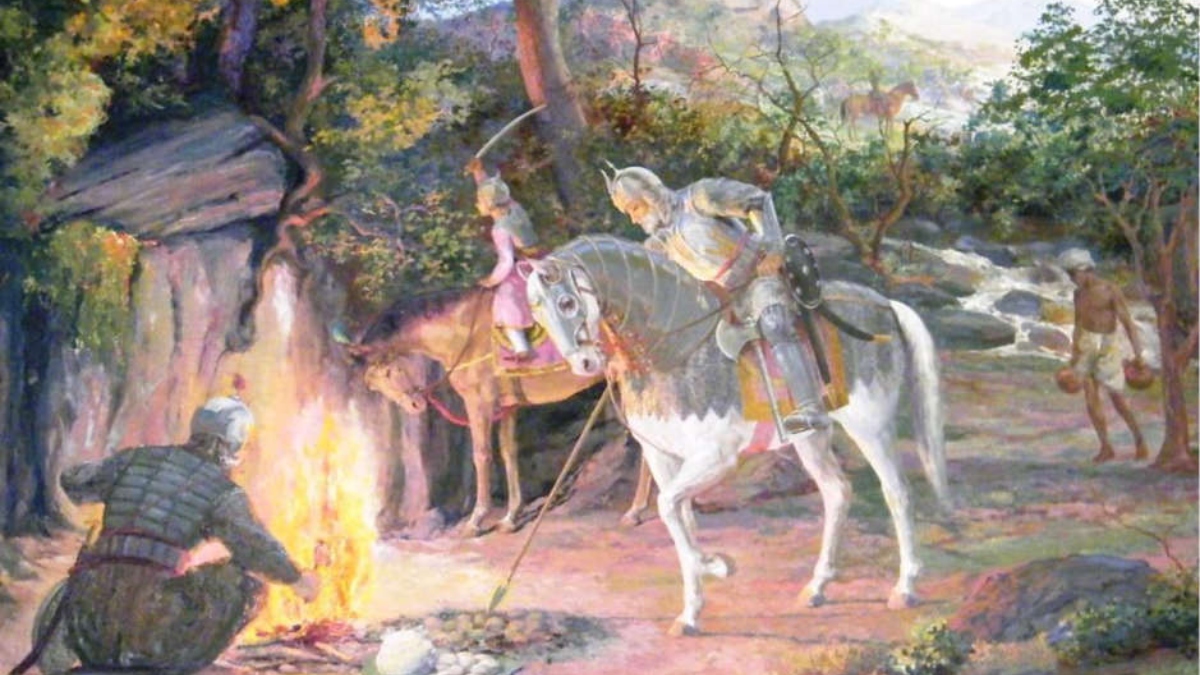
Winters are rapidly setting in and what accompanies a balmy afternoon better than Rajasthan’s classic daal-baati-choorma? This unparalleled stereotype of standard Rajasthani cuisines finds an omnipresence that closely rivals the South’s idli-dosa-sambhar. But their touristic connotations aside, these traditional meals find varied renditions in most traditional households of the state-urban as well as rural. The unsuspecting foodie or wayfarer can expect to be fascinated by the sheer diversity in which they are prepared. Whether in the affluent mansion of a Marwari businessman, or in the humble peasant’s rasoda (kitchenspace), its omnipresence justifies the baati as Rajasthan’s most staple bread. This November, Chef Akshraj Jodha unravels the legacy of the Rajasthani baati, from its regional origins to its artisanal evolution; and the multiple varieties in which it can be enjoyed in our times.

Historical records date the Rajasthani baati as far back as the 8th century AD, when Mewar’s founding father Bappa Rawal was militarily crusading for a stronghold over the region. Many armies, starting from his own would tread the arid lands of Rajasthan sustaining themselves on the baati as a traditional wartime meal. Various chronicles account for Rajput soldiers burying balls of wholewheat dough under layers of sand before setting out towards the battlefield. By the time they returned, the day’s scorching sun rays had naturally baked these into earthy preparations that they later enjoyed with desi ghee. The simplicity of its cooking method, coupled with the rich yet easy nutrition that it provided to the brave vanquishers made the Rajasthani baati stand the tests of time. Over the next couple of centuries, news of this famed martial bread had spread far and wide. A famous painting at Jodhpur’s Mehrangarh Fort depicts a horse-mounted Veer Durgadasji baking baatis with the help of a spear. This particular context makes it rather charming for the bystander to observe the same dough ball being fanned and flipped over by today’s householders.
Parallel to the adoption of baatis by Rajputs in their war campaigns, domestic kitchens welcomed them with equal fervour. Baniya (trader community) settlements of Mewar generously adopted Bappa Rawal’s humble dough ball and paired it up with panchmel dal (a preparation of five lentils cooked together), hence paving avenues for what is today known as daal-baati. As a logical answer to sweetmeat, the churma followed in similar fashion, which was simplistically made by mixing crumbled baati with desi ghee and sugar or jaggery. Just like daal, the baati experienced a significant evolution and presently exists in an innumerable range of variants that are oft-associated with different regions and households.
Indeed, Bappa Rawal and Veer Durgadasji are commemorated just as fiercely off the battlefield, not just by the people of Rajasthan, but also the Marwari diaspora all around the world.
Based on their cooking methods and styles, baatis can be classified into three broad sections:
i. Roasted/baked: Cakes of dried cow dung, locally referred to as upla(s) are stacked in heaps to form an organic incinerator in the slow heat of which, whole wheat dough balls are turned upside down in frequent intervals. Baatis prepared through this traditional method are usually hard and hence, require a soak in desi ghee and dal to soften.
ii. Fried: A more contemporary and convenient baati-making method requires smaller whole wheat dough balls to be deep fried. Many have modified the classic plain dough by mixing spices/ masalas into it. Alternatively, bharwan baatis are prepared with a stuffing at the centre, often made of gram flour and spices.
iii. Steamed: The softer version of baati, also known as baafla is prepared by steaming roasted or fried baatis. Historically, it is believed that as a result of marriage alliances between Rajputs and Mughals, Rajasthani cooks used this cooking method to soften baatis for the Muslim emperors, whose palettes were relatively unaccustomed to the tough baati.
Regional reinventions of the baati are also plenty in number. For example, while the Bikaner region is known to fry its baatis, regions encompassing Kota and Bundi are known for the Hadoti baafla, which is stuffed with besan (Bengal gram) and whole wheat flour. Similarly, Jodhpur’s popular baati contains a stuffing made of a wheat variant known as mota atta. Paania, a more fibrous variant of the baati is made of maize flour and is popularly eaten in Udaipur and parts of Madhya Pradesh as well as Gujarat. Some select recipes of these baatis have been shared with Rajputana Collective as a courtesy by Chef Akshraj Jodha for more readers to try their hand at and savour. After all, an expert food connoisseur to the zenith, he makes no delay in spreading the joy emanated by these rustic and flavoursome bread dumplings that continue to win us over, one morsel at a time.
To read Chef Jodha’s full recipes, kindly visit www.rajputanacollective.com.